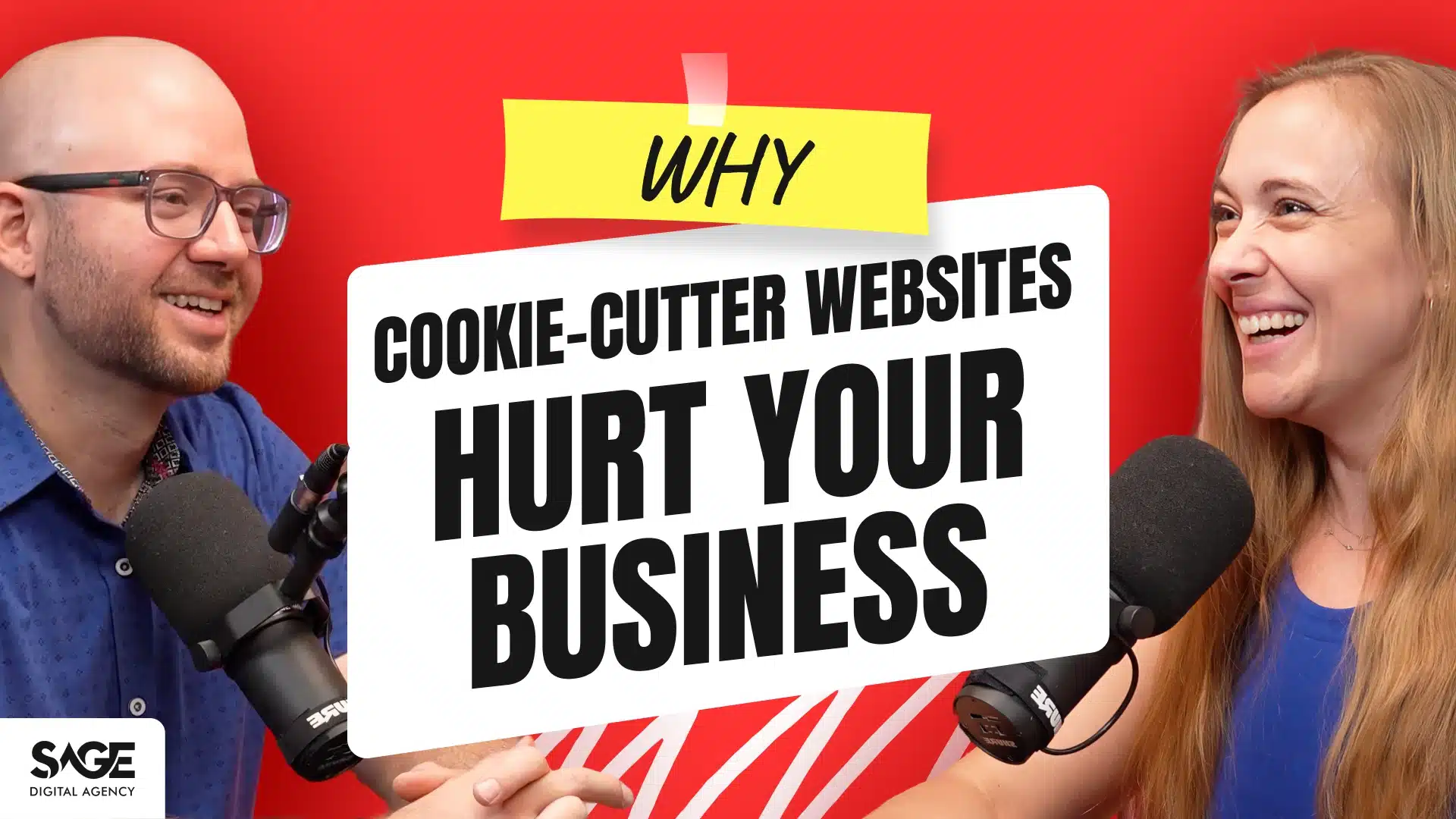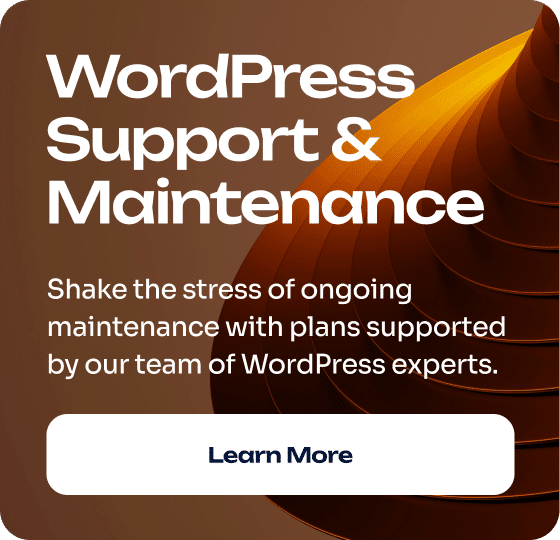Today, many businesses make the same critical mistake: they think they need a standard website when what they really need is strategic web design. The difference between these two approaches can make or break your online success.
Most business owners approach web design with the wrong mindset entirely. They think about websites as digital business cards or online brochures, missing the enormous potential for revenue generation and customer acquisition that strategic web design unlocks.
The Fundamental Shift: From Ordinary to Strategic Web Design
The web development industry has conditioned businesses to focus on the wrong metrics. Traditional web design asks, “Does this website look good?”
Strategic web design asks, “Will this website help me reach my business goals?” This fundamental shift transforms websites from digital brochures into powerful business tools.
Beyond Aesthetics: The Strategic Advantage
Strategic web design goes beyond aesthetics to focus on measurable outcomes and turning your website into a revenue-generating asset.
This approach requires a complete mindset shift from viewing your website as an expense to understanding it as an investment in your business infrastructure. Strategic web design professionals use data-driven methodologies to ensure every design decision serves a specific business purpose, from increasing lead generation to improving customer retention rates.
Why Strategic Web Design Beats Template Solutions
The appeal of template-based websites is obvious: they’re fast, cheap, and seemingly professional. But template solutions are the antithesis of strategic web design. They don’t effectively convey your unique value proposition, your specific customer journey, or the nuances of your industry.
The One-Size-Fits-All Problem
Strategic web design recognizes that every business faces different challenges and serves different audiences. A local restaurant needs a completely different approach than a B2B software company. Cookie-cutter solutions ignore these critical differences.
Understanding Your Unique Market Position
True strategic web design means diving deep into your business model, understanding your competitive landscape, and creating a digital presence that speaks directly to your ideal customers.
It’s the difference between shouting into the void and having meaningful conversations with prospects who are ready to buy.
Strategic web design addresses the fundamental communication challenges that most businesses face online. While template solutions force your unique message into generic frameworks, strategic design creates custom communication pathways that resonate with your specific audience segments and guide them through personalized customer journeys.
The Strategic Web Design Process: Collaboration and Efficiency
The most successful strategic web design projects happen when creativity meets business acumen. This requires a development partner who understands both the technical aspects of web development and the strategic elements of business growth.
Structured Creativity for Better Results
Strategic web design relies on efficient processes that don’t stifle creativity—they amplify it. When you have clear project phases, defined deliverables, and regular check-ins, creative energy gets channeled into solving real business problems rather than getting lost in endless revisions and scope creep.
Quality Over Speed: The Right Balance
The goal of strategic web design isn’t just to launch a website quickly; it’s to launch the right website efficiently. This means having structured workflows that respect your time while ensuring quality outcomes.
A successful strategic web design process typically includes discovery sessions to understand your business objectives, competitor analysis to identify market opportunities, user persona development to target the right audience, and conversion optimization planning to maximize your return on investment. This comprehensive approach ensures that every aspect of your website serves a strategic purpose.
Marketing Integration: Where Strategic Web Design Shines
Strategic web design ensures that once your site goes live, it becomes the optimized landing point for paid advertising, social media campaigns, email marketing, and SEO efforts. Every piece of content, every call-to-action, and every user interaction is strategically designed for conversion and measurement.
The Ongoing Optimization Advantage
The most successful businesses understand that strategic web design is just the beginning. The real work happens in the ongoing testing, analysis, and optimization that turns visitors into customers.
Unlike traditional web design approaches that treat launch as the finish line, strategic web design views launch as the starting point for continuous improvement. This means implementing robust analytics tracking, setting up conversion funnels, and establishing testing protocols that help you understand what’s working and what isn’t.
Speed and Quality in Strategic Web Design
Fast timelines often get a bad reputation in creative industries, but strategic web design proves that speed isn’t the enemy of quality—poor planning is. Professional strategic web design teams can deliver quickly because they have proven processes, clear communication, and the experience to avoid common pitfalls.
The Planning Advantage
Many creative professionals miss deadlines not because they’re perfectionists, but because they lack strategic thinking. They don’t know how to scope projects accurately, manage client expectations, or execute efficiently.
Evaluating Strategic Web Design Partners
When vetting strategic web design partners, look beyond their portfolio. Ask about their process, their typical timelines, and how they handle project management. The best teams can move fast without cutting corners.
The most reliable strategic web design partners will have standardized project management systems, clear communication protocols, and proven methodologies for handling common challenges. They should be able to provide detailed timelines, explain their quality assurance processes, and demonstrate how they’ve successfully managed similar projects in the past.
Digital Agility: Your Strategic Advantage
Unlike traditional marketing channels, digital platforms offer unprecedented flexibility. Strategic web design builds this agility into your website from the ground up. You can test different messages, adjust your targeting, and pivot your strategy based on real-time data.
The Testing and Optimization Framework
Strategic web design involves constant testing of ad copy, landing pages, video content, and conversion paths. Your website should be designed to support this ongoing optimization, not constrain it. This is where strategic web design truly separates itself from traditional web design approaches.
This built-in flexibility means your website can evolve with your business needs, market changes, and customer preferences. Strategic web design creates modular systems that allow for rapid testing and iteration without requiring complete redesigns or extensive development work.
Avoiding the “Master of None” Trap
The digital marketing industry is largely unregulated, which means anyone can claim to offer strategic web design. This has created a marketplace full of generalists who promise everything but excel at nothing.
The Specialization Advantage
True strategic web design professionals understand their strengths and limitations. They stay in their lane and refer out work that falls outside their expertise. This transparency builds trust and leads to better outcomes for everyone involved.
When evaluating potential strategic web design partners, look for specialists who have deep expertise in your industry or business model. Generalists might seem appealing because they offer everything under one roof, but specialists typically deliver better results because they understand the unique challenges and opportunities in your specific market.
The Three Pillars of Strategic Web Design
Exceptional User Experience: Strategic web design creates positive emotional connections while being incredibly easy to use. With up to 80% of web traffic coming from mobile devices, responsive design isn’t optional—it’s essential.
User experience in strategic web design goes beyond just making things look good on mobile devices. It involves understanding user behavior patterns, optimizing page load speeds, creating intuitive navigation structures, and ensuring accessibility for users with disabilities. Every interaction should feel effortless and guide users toward their goals.
Compelling Brand Story: Strategic web design clearly communicates what sets you apart from competitors. This goes beyond features and benefits to include your company’s narrative, values, and unique approach. Content strategy and ongoing SEO optimization ensure your story reaches the right audience.
Your brand story in strategic web design should address the emotional and rational reasons why customers should choose you over competitors. This involves crafting messaging that resonates with your target audience’s pain points, aspirations, and values while positioning your business as the ideal solution to their problems.
Clear Call to Action: Strategic web design guides users toward specific actions on every page, whether that’s making a phone call, filling out a lead form, or browsing your inventory. In strategic web design, confusion is the enemy of conversion.
Effective calls to action in strategic web design are based on user psychology and conversion optimization principles. This means using action-oriented language, creating urgency when appropriate, reducing friction in the conversion process, and testing different approaches to maximize response rates.
Making the Right Strategic Web Design Choice
When evaluating strategic web design partners, focus on process, reliability, and integrity over flashy presentations. Ask tough questions about their approach, their typical project timelines, and how they measure success.
Look for strategic web design teams that can pivot when needed, that focus on quality execution over creative awards, and that understand the difference between building websites and building businesses.
The digital landscape is too competitive for generic solutions. Invest in strategic web design partners who understand your niche, who can build scalable systems that grow with your business, and who view your website as the foundation of your long-term digital strategy.





